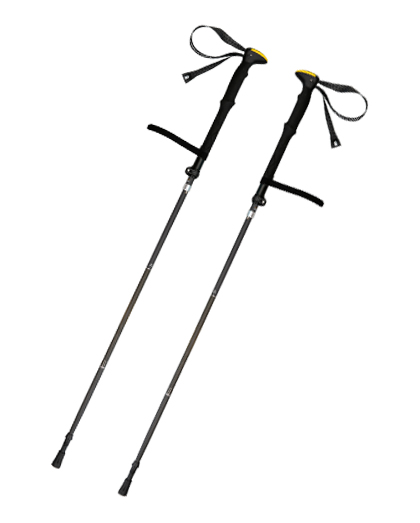

There is much debate over which is better: A single, durable trekking pole or a folding Trekking Pole. Single or double? You'll begin by selecting a single pole or a double pole. Find out the best length: you're aiming for a ninety degree bend in your elbows when you touch the ground. Select features: adjustability, foldability, weight, lockable and shock absorption are only some of the important features and considerations that will guide your decision.
Single trekking poles may be manually adjusted on one end. Double trekking poles can be adjusted over both ends for more comfort and stability. Many double poles have two separate length pins that can be "unfolded" to allow for a greater length of use. The majority of double trekking poles are flexible and have built-in wrist braces to prevent injury during prolonged exposures to the elements. They are available in many lengths and, of course, all offer the single length that can be manually adjusted.

One of the best features of Trekking Poles is that they come with a variety of grip sizes. The smaller cork grip provides an extra-soft, comfortable grip, but prevents the pole from slipping away from your fingers. Medium-sized cork grips provide a medium firm grip but aren't very slippery. Large cork grips provide a large firm grip that allows the pole to glide easily into your fingers. And, finally, large carbon fiber grips offer a very plush and secure grip that prevents the pole from sliding around in your sweaty hands.
In addition to the aforementioned padded grip sizes, there are a variety of trekking staffs to choose from. Some poles are designed with two handles, which provide a sturdy platform for you to hang trekking staffs from. Some staffs are designed with a single handle, while others have two. And staffs are also available with a pocket on their base that allows you to insert trekking poles and other accessories. Some poles even have built-in knife pockets that are accessible from the handle, which makes it easier to keep your trekking staff safe and clean.
Trekking Poles generally weigh between seven and eighteen ounces per pair. Although this may not seem like much weight, it's actually because you're using a lot more of your body weight to support the poles. With less weight on your shoulders, your spine and hips are also supported. However, if you feel as though you could use more support, then aluminum trekking poles are a great choice. Aluminum poles typically weigh between eight and ten ounces per pair.
The overall length of trekking poles is another consideration to take into account. While it is generally recommended that trekking poles range in length between twenty and thirty inches, some poles are longer. Overall length can be an issue if you are shorter or taller. Many shorter people find it difficult to comfortably fit trekking poles within their footwear, so long poles are often recommended. However, shorter people may not want to sacrifice grip for length, so it's important to note that long trekking poles tend to be heavier.
Finally, consider whether you want an adjustable trekking pole or one with a fixed length. Although an adjustable pole will generally cost more than a fixed length model, they tend to last longer. And, depending upon your activity level, you may find that fixed length trekking poles are necessary in order to comfortably carry your camping or hiking gear.
Once you've narrowed down your needs, it's time to think about what type of trekking pole best suits your needs. Consider your height, weight, and preference for length and grip. Then consider the various climbing faces and slopes you will be facing when you hike. Finally, consider your level of expertise and comfort when climbing. (Is an uphill or downhill type surface likely to cause pain?)